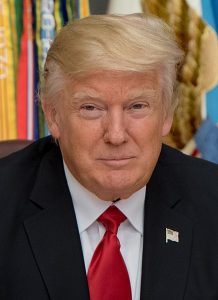Commutation
A Guide to Pennsylvania Clemency Options: Pardons and Commutations of Sentence
Pennsylvania Clemency : A Pennsylvania pardon is a way for a person convicted of a crime to regain their civil rights. The Pennsylvania governor sets aside the punishment or sentence for the crime. Overall, a Pennsylvania pardon allows a convicted individual to regain all of the rights of any other citizen. The Pennsylvania Board of…
Read MorePardon vs Commutation Explained with Examples – What is the difference between a pardon and a commutation?
Article II, Section 2, Clause 1 of the Constitution of the United States grants the President the power to grant clemency to persons who have committed federal crimes. Specifically, the clause states that “The President . . . shall have Power to grant Reprieves and Pardons for Offenses against the United States, except in Cases…
Read MoreCyntoia Granted Clemency by Tennessee Governor After Life Sentence
Cyntoia Brown Story : The heartbreaking facts of the crime for which Cyntoia Brown served 15 years of a life sentence ultimately resulted in Cyntoia granted clemency. At the Cyntoia Brown clemency hearing in 2018, the Tennessee governor heard arguments that she was only 16 when given a life sentence with parole eligibility in 51…
Read MoreBrendan Dassey of Netflix “Making a Murderer” Seeks Clemency
Brendan Dassey from “Making a Murderer” Files a Clemency Petition : Brendan Dassey of Manitowoc County, Wisconsin captivated Netflix viewers across the nation as the subject of the popular “Making a Murderer” documentary. The documentary focuses on the controversial investigation, criminal prosecution, conviction and sentencing of Brendan Dassey and his uncle for the 2005 murder…
Read MoreMichigan Governor Snyder Grants Six Commutations in Eight Years (Out of 4,017 Requests)
Whom did Rick synder pardon ? – Since 2011, there have been over 4,000 requests from Michigan state prisoners for commutation of their sentences.In the last ten years, 168 prisoners have had their requests granted. Ex Michigan Governor Rick Snyder was responsible for a grand total of six of those commutations in his eight years…
Read MoreWill a Second Step Act Follow the First Step?
The question still remains if there is going to be a second step act . The First Step Act, arguably the most significant criminal justice reform bill passed in nearly ten years, was drafted in a rare showing of bipartisanship. Will there be a second Step act ? It is expected to reduce the sentences…
Read MoreX Tennessee Governor Grants Clemency to 11 Current and Former Felons
Bill Haslam Clemency Update : Tennessee Governor Bill Haslam ordered four sentence commutations for state prisoners and pardons for seven non-incarcerated individuals in the last two weeks of 2018. Whom did Bill haslam granted clemency ? In a news release, Haslam said the seven who were given pardons, listed below, “have made positive contributions to…
Read MoreTrump Doj news : Reformers to Trump – “Take the Federal Clemency Process Out of DOJ’s Hands”
Trump Doj news update : When President Trump signed the First Step Act into law at the end of last year. Its bipartisan congressional support demonstrated widespread recognition that the criminal justice system is due for reform. Recognizing that the Act is limited in scope, primarily addressing sentencing for a select few offenders, a diverse…
Read MoreThe Presidential Pardon Power – What is a presidential pardon ?
Presidential Pardon Power comes from the constitution. The president may reduce a prisoner’s sentence or pardon him for any federal crimes. Some presidents use this power to help rectify injustices from outdated mandatory minimum sentence laws. It often results in faster results than waiting for Congress to change laws. The Presidential pardon power is an…
Read MoreTrump Manafort pardon may lead possible outrage
Trump manafort pardon – Is it really going to happen ?While Paul Manafort, waited to be sentenced in federal court , New York politicians and prosecutors worried that president might simply issue him a trump pardon, thereby cancelling any prison time for his crimes.This trump manafort pardon is causing a invoked outrage. To avoid this…
Read More








